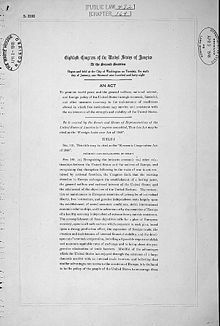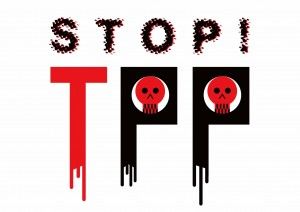Wall Street wins again
By David Dayen, Salon
Wednesday, Feb 13, 2013 12:26 PM EST
A year ago, President Obama gestured toward the first lady’s box at the State of the Union address at Eric Schneiderman, the attorney general of New York. Schneiderman had just agreed to co-chair the Residential Mortgage-Backed Securities working group, an initiative between state and federal law enforcement officials and bank regulators, designed to investigate and prosecute fraudulent Wall Street activity that led to both the creation of the housing bubble and its collapse. In exchange, Schneiderman dropped his objections to a settlement over some of the banks’ fraudulent post-crash activity, particularly around fraud in foreclosure processing.
…
Schneiderman’s “task force” (a generous appellation) was merely a politically motivated shell organization grafted onto that public relations strategy. This was evident almost from the moment of the announcement, but the coalition of self-proclaimed bank accountability advocates, who had backed the administration into a corner over the lack of prosecutions, decided to align with Schneiderman and his kabuki task force, losing whatever leverage they may have had. If those same groups who feel “betrayed” and “lied to” had stayed on the outside and shamed those in power into action, we would probably have more accountability today.
…
Maybe these groups who claim to be interested in accountability should have recognized the value of what pressured the White House to set up the diversionary tactic of a task force in the first place: public shaming. Last month’s Frontline documentary “The Untouchables” has had arguably more of an impact on reviving moribund financial fraud cases than anything else. Within a couple of weeks of its premiere, the head of the criminal enforcement division, Lanny Breuer, announced he would step down. Then, DoJ suddenly decided to sue credit rating agency Standard and Poor’s over its conflict of interest in rating clearly fraudulent securities as safe assets, a case it had been investigating for two years. You can view this as an accident of timing; it seems more like a direct response. Shaming has done far more than a pretend task force, though that’s admittedly a low bar. You would think outside pressure groups would have recognized the virtue of outside pressure instead of trying to play an inside game.President Obama didn’t mention the task force in this year’s State of the Union, though he did say that homeowners now “enjoy stronger protections than ever before.” He also made reference to a Burmese man, who, in reference to a presidential visit to Rangoon, reportedly said, “There is justice and law in the United States. I want our country to be like that.” Hopefully they don’t get news about the “task force” in Rangoon; I wouldn’t want to burst the man’s dreams.
The Greatest Disappointment
By Mike Lux, Crooks and Liars
April 01, 2013 06:00 PM
So there are two questions that Obama loyalists might ask about this report. The first is whether all this negativity is truly deserved. The second is, why are Wall Street accountability activists so obsessed with this issue?
On the first question, I am sad to say the answer is mostly yes. If I had been writing the report, I would have been more positive about the accomplishments of CFPB, would have given the administration more credit on a few things in terms of Dodd-Frank and a few of the appointments they have made, would have pointed out that Republicans are doing everything they can to starve regulatory agencies of resources, and being the loyal Democrat I am, I would have written the report more diplomatically. But when you add up all the results of the Obama administration’s dealings with Wall Street, it is hard to avoid the fact that life hasn’t changed much at all for the big banks, and that they continue to make money hand over fist while the rest of the economy is stuck in the mood. It is hard to think of any one of the report’s bullets listed above that aren’t accurate. Most damning of all are these absolutely true words in the report’s conclusion:
“The irony in all this is that the areas in which the Obama Administration has been found most wanting by critics for its handling of Wall Street accountability are not the result of intractable differences with a Congress hamstrung in inaction. Instead, they are areas almost wholly under the sole control of the Administration through its executive powers, and carried out largely through cabinet agencies.“ On the second question, the reason Wall Street activists are so obsessed with the lack of toughness toward Wall Street is that Wall Street is ground zero for the rest of the problems in our economy. These monstrously huge mega-banks completely dominate our economy, siphoning off money that might otherwise go into productive uses in the mainstreet economy so that the big bankers can keep speculating away. And when they screw up in ways that hurt the rest of us, even when they blatantly violate the law, the fact that they are never seriously punished means they have no incentive to stop. Until the Obama administration fixes this problem, the rest of the economy is going to keep suffering, and the risk of future financial meltdowns will keep growing.
Et tu digby?
It means something that Mike would write this. He’s been trying hard for a long time to give the administration the benefit of the doubt on this. It’s tough to go up against Wall Street. But there was no longer any other way to look at this once we heard the Attorney General say this under questioning from the Senate:
I am concerned that the size of some of these institutions becomes so large that it does become difficult for us to prosecute them when we are hit with indications that if you do prosecute, if you do bring a criminal charge, it will have a negative impact on the national economy, perhaps even the world economy, and I think that is a function of the fact that some of these institutions have become too large. Evidently, federal law enforcement is yet another area in which the Executive Branch has no power — or, at least, feels it is injudicious to use it. This instance of presidential impotence is especially difficult because it pretty much says that even if the congress were to make new laws, the Justice Department still couldn’t enforce them because of these alleged threats to the economy. So we’ll just have to put up with the looting and wait for the house of cards to collapse again. Because otherwise the house of cards will collapse.
The lesser of two evils IS STILL EVIL! Dave and Cenk were on it. Where were you?

 On this day in 1948,
On this day in 1948, 
 The Electronic Frontier Foundation reports that
The Electronic Frontier Foundation reports that 
 On this day in 1513, Ponce de Leon discovers Florida. Near present-day St. Augustine, Spanish explorer
On this day in 1513, Ponce de Leon discovers Florida. Near present-day St. Augustine, Spanish explorer 